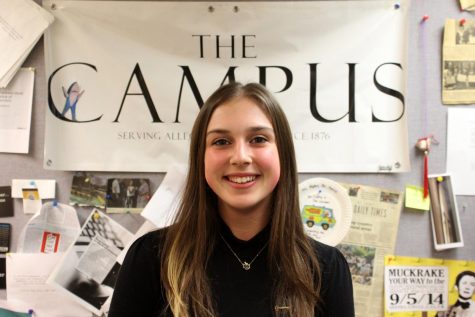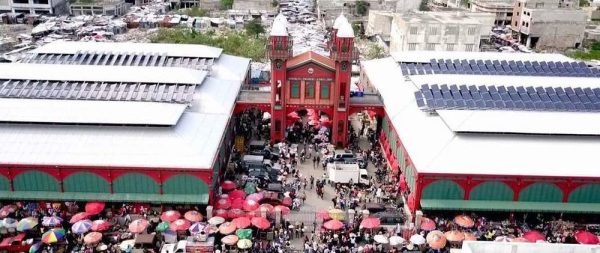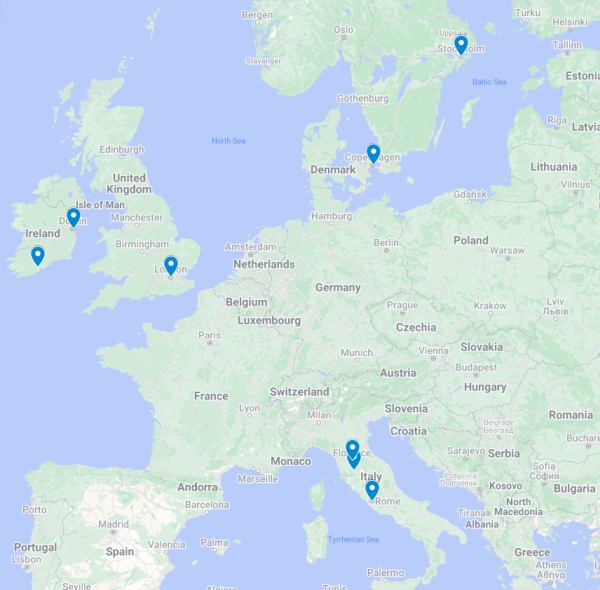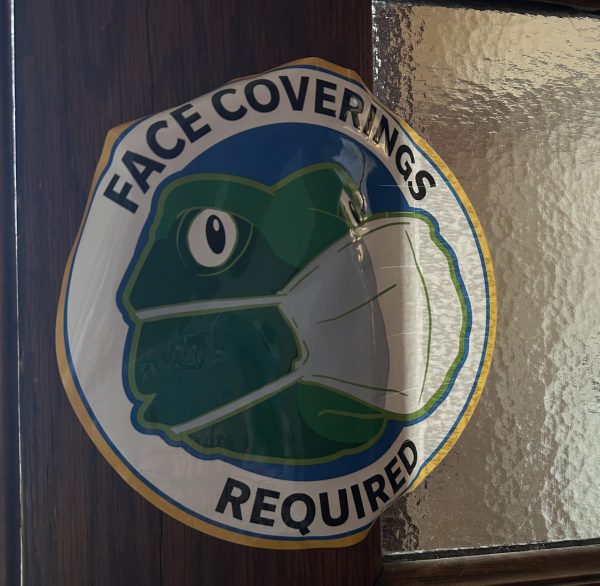Halloween around the world
Halloween is a time of trick-or-treating, dressing up and telling spooky ghost stories for most people in the United States.
According to History.com, the celebration originated around 2,000 years ago from the Celts in Ireland, then called Samhain. The festival marked the end of the prosperous farming season and the beginning of the harsh winter, which often preceded much sickness and death.
The Celts believed this night to be when the boundary between life and death was thinnest, and that the dead could walk the Earth for this one night. Druids built huge bonfires and priests attempted to tell fortunes about the new year ahead.
The Halloween holiday has since changed dramatically, not only over time, but also based on location around the globe.
Puerto Rico native Alejandra Fernandez, ’26, talked about the Halloween traditions she experienced all throughout her childhood. According to the Council on Foreign Relations, Puerto Rico has been a U.S. colony since 1898, which Fernandez attributes as the reasoning for many of the similarities.
“To be honest (Halloween) is more or less like here,” Fernandez said. “We’re colonies so we kind of get everything that you guys get.”
Fernandez describes many of the same traditions that most Americans are familiar with: Getting out decorations, finding the perfect costume and going trick-or-treating on Halloween night.
“I’ve always gone trick-or-treating, and I think most of my friends have,” Fernandez said. “I think it has always been a thing because my mom always went trick-or-treating.”
Fernandez explained that, because Puerto Rico is a U.S. colony, they have many of the same stores that the United States has. Party City, Walmart and Costco are all familiar sights.
“Those are big supply companies,” Fernandez said. “Every store has Halloween things since September. You walk in, you’re like, ‘Oh, it’s Halloween. Let’s just grab some things and just put them in our house.’”
While Puerto Rico has similar Halloween traditions to the United States, many other countries differ greatly in how they celebrate. Freya Lindqvist, ’25, provided a Halloween perspective from Stockholm, Sweden.
“(Halloween) is definitely a bigger thing here. It’s a huge thing,” Lindqvist said. “It’s a quite new tradition for us.”
Lindqvist explained that Halloween came to Sweden around the 1990s and has slowly been gaining in popularity since then. She said that about 50% of Swedes take part in it now.
“(It’s) sort of similar to what we are doing in the U.S.,” Lindqvist said. “You dress up, (go) trick-or-treating … We don’t do the Halloween decorations. You won’t see houses lit up or graveyards on front yards.”
Lindqvist also noted that Sweden does not generally participate in Halloween parades.
“In fact, I don’t even know what that is,” Lindqvist said.
Surrounding European countries seem to echo similar sentiments. Lucia Jueguen, ’24, from Spain and Sasha Shafran, ’25, from Ukraine explained their countries’ Halloween traditions.
“There was also this thing where we come to the doors and be like, ‘money or death,’” Shafran explained, comparing her experiences against American trick-or-treating. “The literal translation is ‘money or death.’”
Shafran explained that Halloween celebrations in Ukraine are a much more toned-down version of what we experience here in the U.S.
“It’s like generally not a huge celebration anywhere in Europe,” Shafran said. “We just ignore it because we have other stuff going on, we are preparing for Christmas. Nobody does Halloween.”
Juegen related similar observations from her home in Spain.
“Especially since a few years ago it is more Americanized,” Juegen said. “We don’t really celebrate it by dressing up or going trick-or-treating, that was not a thing in Spain. But now it is more and more.”
Juegen explained that the transition into a more American Halloween has been a gradual one. She noted how her parents never went trick-or-treating, but it is now not unusual for some kids to.
She also noted the existence of another holiday, Todos Los Santos, or All Saints Day, celebrated on Nov. 1.
“Traditionally, people go to the cemetery to visit people in your family that have passed and bring flowers,” Juegen said. “So that is, I guess, what makes it different from America.”
Juegen also explained that there are certain regions of Spain that are more “pro-Halloween” than others, mostly having to do with the region’s history and heritage.
“My region, Galicia, is tied to Celtics, like Ireland,” Juegen said. “So we have some tradition related to that. But other parts of Spain, not really, because they’re not Celtic.”
Though Halloween is not widely celebrated in Spain, the Spaniards still love to dress up just as much as the next country.
“We also have Carnival in Spain. A lot of Latin American countries celebrate it,” Juegen said. “That’s our time to dress up. There’s a parade in each town and people would dress up in groups.”
While many countries have some degree of Halloween celebration present, many other, more religious countries actively avoid celebrating the holiday, as many traditions have somewhat demonic origins.
“There is absolutely nothing,” said Dawit Kahesay, ’24, regarding Halloween traditions in his home country of Ethiopia. “The only celebrations that are even akin to Halloween is our New Year’s. We have a celebration where the kids do drawings and stuff like that and go door to door and sell them throughout the neighborhood.”
Though Kahesay does not know of a clear reason why Halloween is not celebrated in Ethiopia, he was willing to share his ideas on the subject.
“I think it is mainly due to the religion in my country,” Kahesay said. “(It is) very strongly Orthodox Christian, with a culture of Islam as well. They hate the season. It’s like, ‘Why are you celebrating this?’”
Kahesay explained that, to a country so rooted in its religion like Christianity, a holiday celebrating witches and ghosts and all things demonic did not really resonate well.
“They have trick-or-treating (supplies) in stores and stuff but the shelves are always full,” Kahesay said.
Riya Agrawal, ’23, also had different cultural insight on Halloween, as her entire family is Hindu, moving to the U.S. from Northern India.
“I, being born and raised in the States, always did Halloween as a little kid,” Agrawal said. “But my grandfather was never a huge fan of Halloween because I guess Halloween can glorify horror and, like, just not looking at departed souls in a good light.”
Agrawal explained that, because of the prevalence of the Hindu religion in India and Indian culture, celebrating Halloween is seen as disrespectful to those that have passed on. She said that this may be due to practices observed during Diwali, or the Festival of Lights, which is celebrated around the same time as Halloween.
Agrawal said that Chhoti Diwali, which is the time before Diwali, was a period of darkness and death for the Hindu people. It is often spent paying respect to the dead through fasting and prayer.
“Diwali itself is the day that one of our gods came back and all of the town and village lit up,” Agrawal said. “It was celebrating that kind of a turn of that dark period.”
Halloween, in turn, can seem like a disrespectful thing to celebrate during this time of remembrance and worship.
“It’s not really celebrated in India and it’s something that is quite frowned upon, truthfully,” Agrawal said. “If you look at more modern India they do celebrate it, but if you kind of look back at our culture it’s a little bit against that.”
Nonetheless, Agrawal said that she likes Halloween, and is looking forward to it this coming weekend.
“I just love how creative people get. I think it’s a great way to express yourself,” Agrawal said.

Lottie Mateyak is a senior from Tamaqua, Pennsylvania. She is a Biology major with a Writing minor. This is her first semester working for The Campus as...











